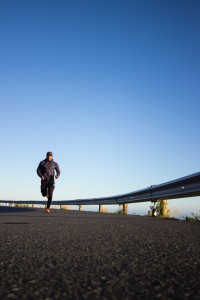The first 5 minutes of exercise are a physiological marvel, whether you’re new to exercise or a long-time athlete. Understanding what happens during the first few minutes of exercise will help you to feel more comfortable and stay motivated.
Why Do I feel So Out of Breath?
If the first five minutes of your workout feel like some of the hardest, I totally get that. The feeling of early fatigue during exercise is normal, and it even happens to highly trained athletes. It’s easy to feel demoralised by heavy breathing and burning legs but use this knowledge as a reminder of the importance of the warmup and remember what’s happening in your body in the first few minutes of exercise.
The physiological changes that allow you to maintain steady-state exercise occur during almost any exercise, but a heavy sensation of fatigue and breathlessness is most commonly noticed during running, cycling, stair climbing, swimming, and other high-intensity, full-body endurance exercise. The sensation is caused by the body’s lag time in delivering adequate fuel to the working muscles.
The Metabolic Chemistry of the Warmup
In order for muscles to contract, they require energy in the form of adenosine triphosphate or ATP. However, the body only has enough available for approximately 10 seconds, after that time it needs to be manufactured. The body uses several energy pathways, including anaerobic glycolysis and aerobic glycolysis, in order to provide fuel for the working muscles.
The anaerobic system offers about two to three minutes worth of ATP, but then the body needs to switch to aerobic glycolysis to continue making fuel. “Aerobic” means “with oxygen.” This process uses a lot of oxygen to convert stored glycogen and fat into energy. Once you tap into aerobic glycolysis, you can keep the muscles contracting for hours.
But switching energy systems can create an oxygen debt until the body is able to move oxygen to the working muscles fast enough to facilitate aerobic glycolysis. You may feel a burning sensation and discomfort in the muscles and start breathing heavily as you increase the delivery of oxygen to the muscles. Your heart rate will also increase to pump more blood, along with oxygen and nutrients, throughout the body. Once the transition occurs, you can move along comfortably at a steady pace and your breathing rate and heart rate will settle down as well.
It’s understandable to find the initial burning and fatigue a deterrent to exercise, but keep going, and when you make it through the first 5 minutes, your body will start to adapt to a steady state in which the aerobic energy system is able to keep up with the oxygen demand. You may need to adjust your pace, but whether you’re running a marathon or walking briskly, you’ll find a steady pace which you can maintain for quite some time before running out of energy.


